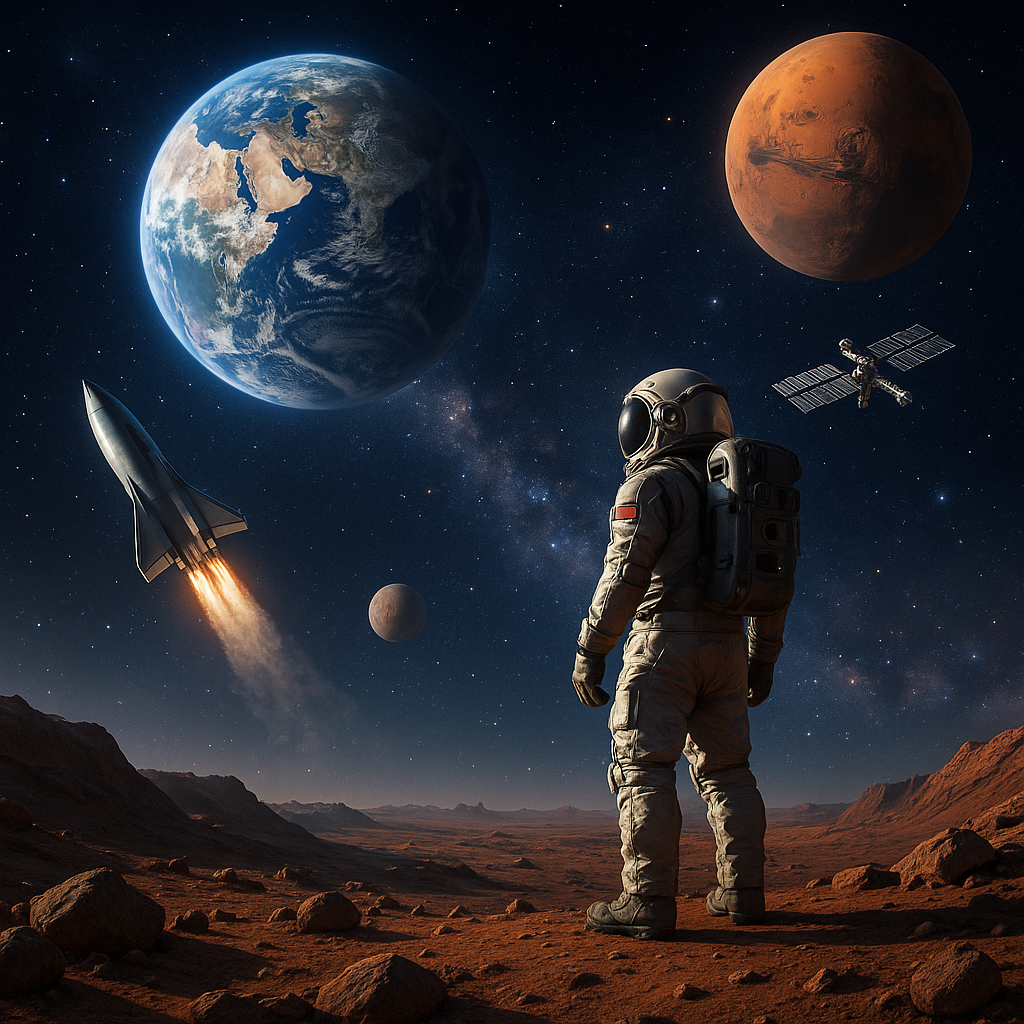Space exploration has always been a symbol of human ingenuity and ambition. From the first moon landing in 1969 to the Mars rovers and the construction of the International Space Station (ISS), our reach into the cosmos has steadily expanded. But today, the future of space exploration looks more dynamic and promising than ever before, driven by technological innovation, international collaboration, and a new wave of private space companies.
1. The Rise of Commercial Spaceflight
In recent years, private companies like SpaceX, Blue Origin, and Rocket Lab have revolutionized access to space. SpaceX’s reusable rockets have drastically reduced the cost of launches, opening the door for more frequent missions. The upcoming Starship vehicle promises to carry massive payloads and even humans to the Moon, Mars, and beyond. As commercial spaceflight matures, we may see regular trips to orbit, lunar tourism, and privately-run research stations.
2. Return to the Moon
NASA’s Artemis program aims to return humans to the Moon by the late 2020s, including the first woman and person of color to walk on its surface. The Moon is no longer just a symbolic destination—it’s being positioned as a strategic launchpad for deeper space missions. Lunar bases could serve as staging points, providing valuable resources like water ice and reducing mission costs to Mars and beyond.
3. Human Missions to Mars
The next giant leap is Mars. NASA and ESA are developing the Mars Sample Return mission, set to bring back Martian soil by the 2030s. Meanwhile, SpaceX plans to send a crewed mission as early as the mid-2030s. Long-duration spaceflight, radiation shielding, food production, and psychological health are major challenges, but progress is being made. A successful mission to Mars would represent a pivotal moment in human history—our first steps on another planet.
4. Deep Space Exploration and Robotics
Beyond Mars, robotic missions will continue to lead the charge. The James Webb Space Telescope has already begun transforming our understanding of the early universe, and future space telescopes will look for signs of life on exoplanets. Missions like NASA’s Europa Clipper and ESA’s JUICE will explore icy moons believed to harbor subsurface oceans. These robotic explorers may find microbial life or conditions suitable for life, reshaping our understanding of biology and our place in the cosmos.
5. Space Habitats and Off-Earth Living
As space travel becomes more routine, long-term habitation will be necessary. Space habitats—such as rotating space stations with artificial gravity—could support human life for months or even years. Advances in 3D printing, recycling, and in-situ resource utilization (using local materials for construction and life support) are key to building sustainable living environments in space.
6. International and Ethical Dimensions
Countries like China and India are expanding their space programs rapidly, with plans for their own space stations, lunar missions, and interplanetary probes. This international race adds both competition and opportunities for collaboration. At the same time, ethical considerations—such as planetary protection, space debris, and the equitable use of space resources—must be addressed through robust international frameworks.
7. A Cosmic Perspective
At its heart, space exploration is about more than technology—it’s about curiosity, survival, and legacy. It forces us to think long-term, to innovate, and to cooperate. As we step further into the solar system and gaze deeper into the universe, we are not just seeking new worlds—we are seeking a greater understanding of our own.
The future of space exploration is no longer confined to science fiction. It’s unfolding now, driven by an exciting blend of public ambition and private enterprise. From the Moon to Mars and beyond, humanity is preparing to become a multi-planetary species—ushering in a bold new chapter in the story of Earth’s most curious creatures.

